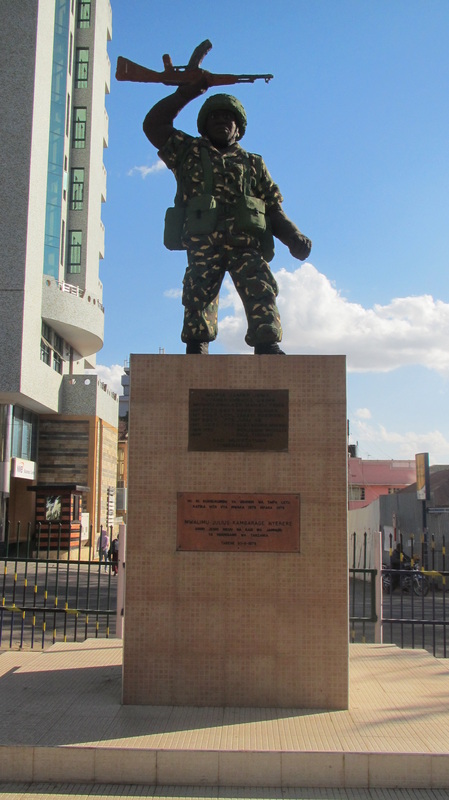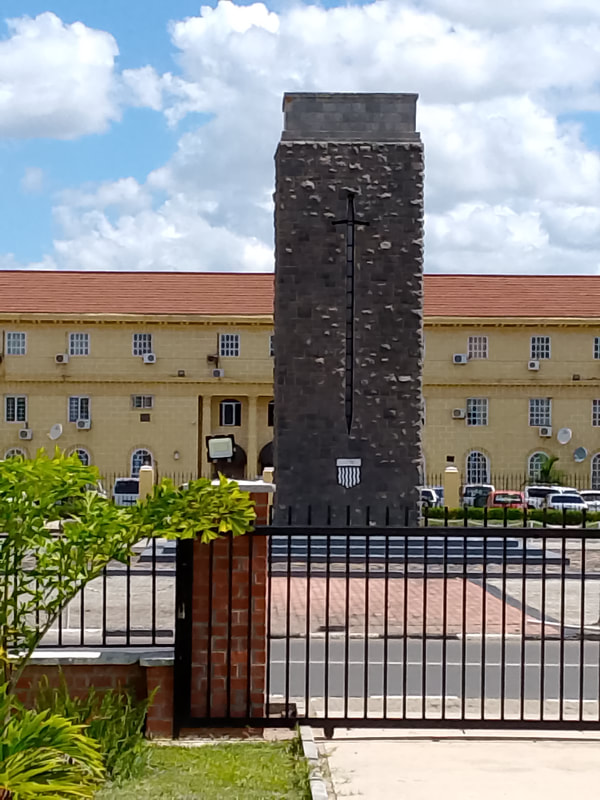Today, CNN online is running an opinion piece by Calderisi that recalls the conclusions from his book and includes a few new statistics in support. Hopefully this column will introduce Calderisi's book to new readers. It is not an academic treatment, but this increases both its readibility and audience. He tackles tough issues including culture, leadership, political correctness, and the inertia of the development industry (governmental, international, NGO, private sector). Generalizations and recommendations abound, and there are a few factual errors that may upset the specialist, but it is the practical experience he draws on that provides enlightening and disheartening examples of the obstacles to better governance that aid faces and, perversely, sometimes produces. This is a highly critical perspective from a one-time IFI insider; Calderisi is not well received by some African elites, many in the development community, and scholars that subscribe to various structural under-development of Africa theses, but his book and perspective is worth a look. His work provides some influence on the concept of "routinized intervention" that I am currently developing in my work on the formative years of Canadian and American foreign policy and engagement in Africa during the independence era.
|
Robert Calderisi is a Canadian retired World Bank official that doesn't hold back. Frustrated after years of working in and on Africa during spells at CIDA, the OECD, and the World Bank, Calderisi published his provocative The Trouble with Africa: Why Foreign Aid isn't Working with Palgrave in 2006. This predates the firestorm around Dambisa Moyo's Dead Aid by three years.
Today, CNN online is running an opinion piece by Calderisi that recalls the conclusions from his book and includes a few new statistics in support. Hopefully this column will introduce Calderisi's book to new readers. It is not an academic treatment, but this increases both its readibility and audience. He tackles tough issues including culture, leadership, political correctness, and the inertia of the development industry (governmental, international, NGO, private sector). Generalizations and recommendations abound, and there are a few factual errors that may upset the specialist, but it is the practical experience he draws on that provides enlightening and disheartening examples of the obstacles to better governance that aid faces and, perversely, sometimes produces. This is a highly critical perspective from a one-time IFI insider; Calderisi is not well received by some African elites, many in the development community, and scholars that subscribe to various structural under-development of Africa theses, but his book and perspective is worth a look. His work provides some influence on the concept of "routinized intervention" that I am currently developing in my work on the formative years of Canadian and American foreign policy and engagement in Africa during the independence era.
1 Comment
Human Rights Watch (HRW) reported today, after a month long investigation, the ongoing threat posed by the Lord's Resistance Army (LRA) to residents across a wide swathe of the northern-most region of the DR Congo (DRC) and extending into the Central African Republic (CAR). This remote area is an ideal area of operations for the LRA after years of operating in northern Uganda and southern Sudan. Abductions, rapes, killings, and looting are the hallmark of this directionless band of guerilla fighters that rely considerably on kidnapped children to fill their ranks.
As noted by the HRW report, "Three of the LRA's leaders, including Kony and Odhiambo, are sought by the International Criminal Court under arrest warrants issued in July 2005 for war crimes and crimes against humanity in northern Uganda. " A very good account of the strategy and obstacles to securing the surrender of Kony and the LRA during peace talks (c. 2007) can be found at the Enough Project. After Kony backed out, again, a US supported regional military campaign in late 2008 disrupted the LRA in the DRC but did not capture their leadership and only pushed them deeper into the DRC and CAR. HRW is using this report to put pressure on the Obama administration to implement legislation signed by the President less than three months ago (I have to admit I had not heard about this until now). The Lord’s Resistance Army Disarmament and Northern Uganda Recovery Act of 2009 is supported by a large number of NGOs as well as powerful Senators Feingold (D-WI) and Brownback (R-KA). The complete text of the legislation is available here. Most pressing for President Obama is a requirement to submit a strategy to Congress within 180 days of the signing of the Act, which means before the end of November 2010. Despite being highly supportive of private-sector led development, I often find Canada's Fraser Institute overly strident. The stridency impulse has improved marginally since libertarian Michael Walker's departure as President in 2005. That being said, the Fraser Institute does do some interesting and useful data collection and analysis that is often overlooked simply because of its source. One such report is its Survey of Mining Companies: 2010 Mid-Year Update . This survey of mining company executives rates their perceptions of jurisdicational (that is, above ground risk) attractiveness of global mining locales.
Predictability in operating and regulatory environment is fundamentally what the survey assesses. Only one African country is in the top ten, Botswana, but only one is in the bottom ten, Zimbabwe. Six other African mining stalwarts are also rated (though not emerging ones such as Burkina Faso, Eritrea, Ethiopia, Madagascar, Mali, or Mozambique). Many highly regulated jurisdications are in the top ten, including various Canadian provinces, Finland, Chile, and two American states. One of my upcoming research projects will be to utilize the survey results over time (the survey began in 1997) to check these results against investment decisions by Canadian senior and junior mining companies in Africa. Do changes in perceptions of attractiveness of mining jurisdications track closely to changes in mining codes, regulation, and/or other political factors? If so, what exactly? And can upward or downward trends in survey results predict future upward or downward cumulative investment ? The common sense answer should be yes, as the survey is asking those making the decisions. But the balance between above ground risks and below ground (geological) attractiveness can impact decision-making, as can misperceptions of some business leaders versus others. |
AuthorChris WJ Roberts is a Canadian international business and policy consultant; a student of African politics, international relations, and Canadian foreign policy working towards a PhD in political science at the University of Alberta; and an instructor in political science at the University of Calgary since 2014 Archives
February 2016
Categories
All
|



 RSS Feed
RSS Feed
